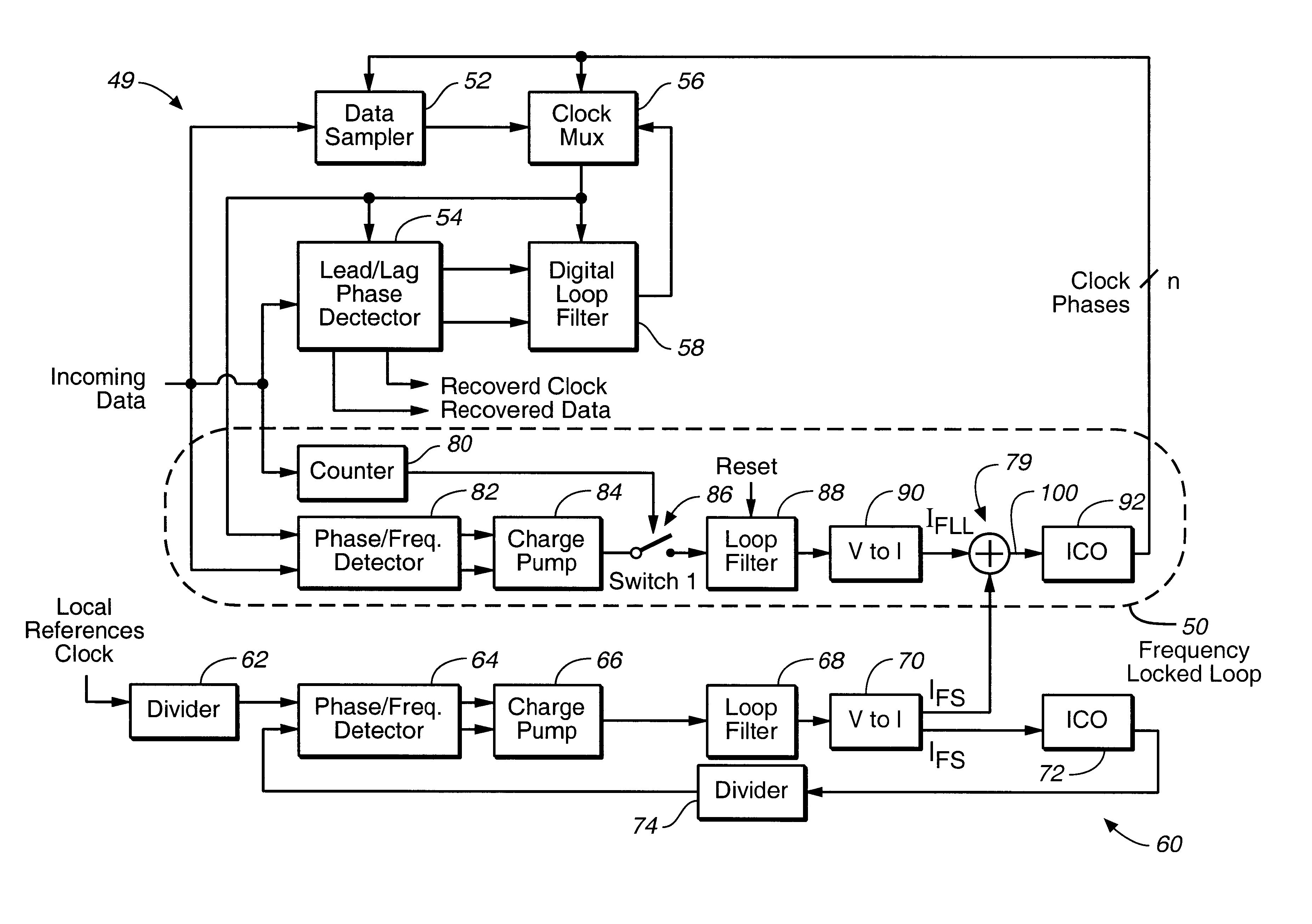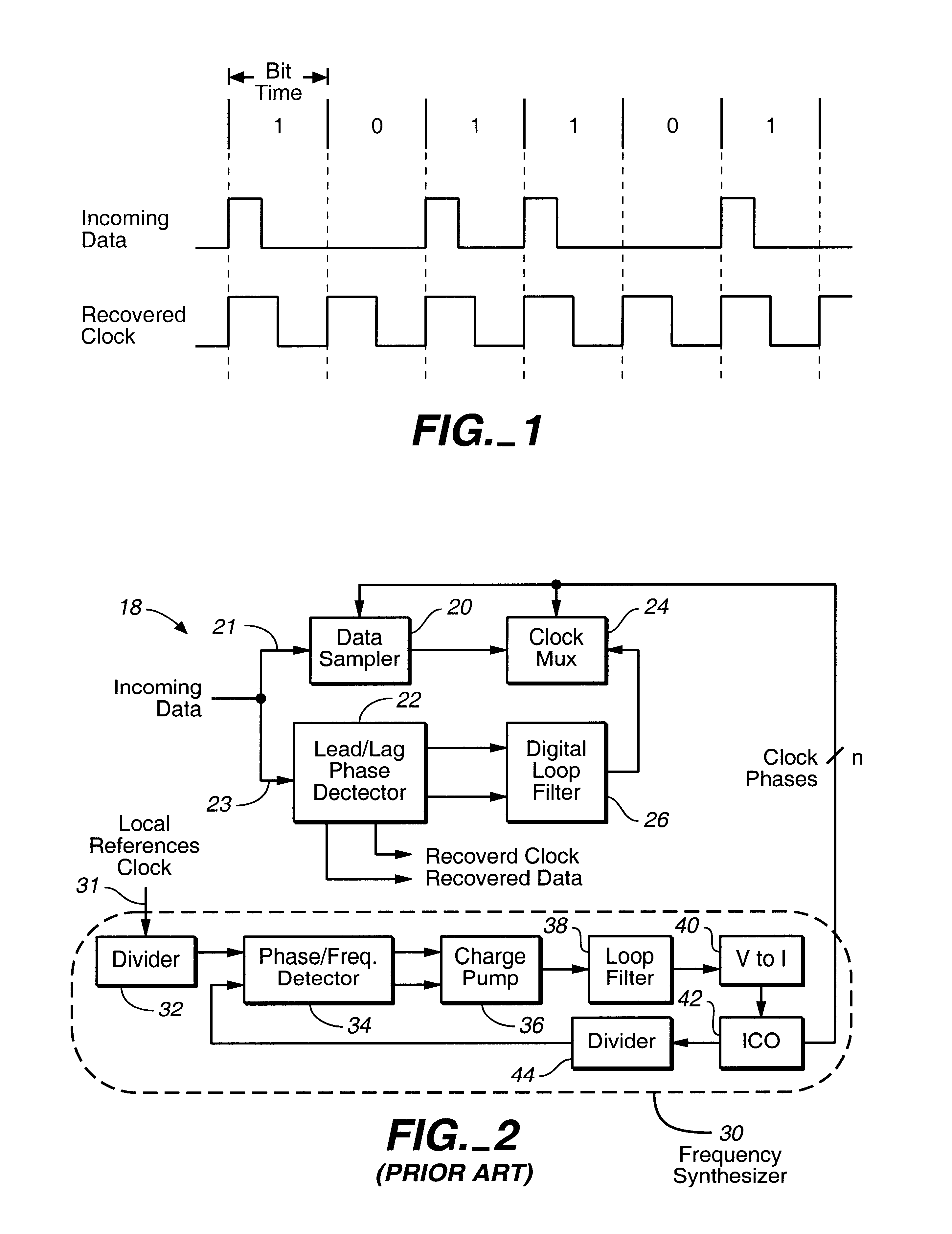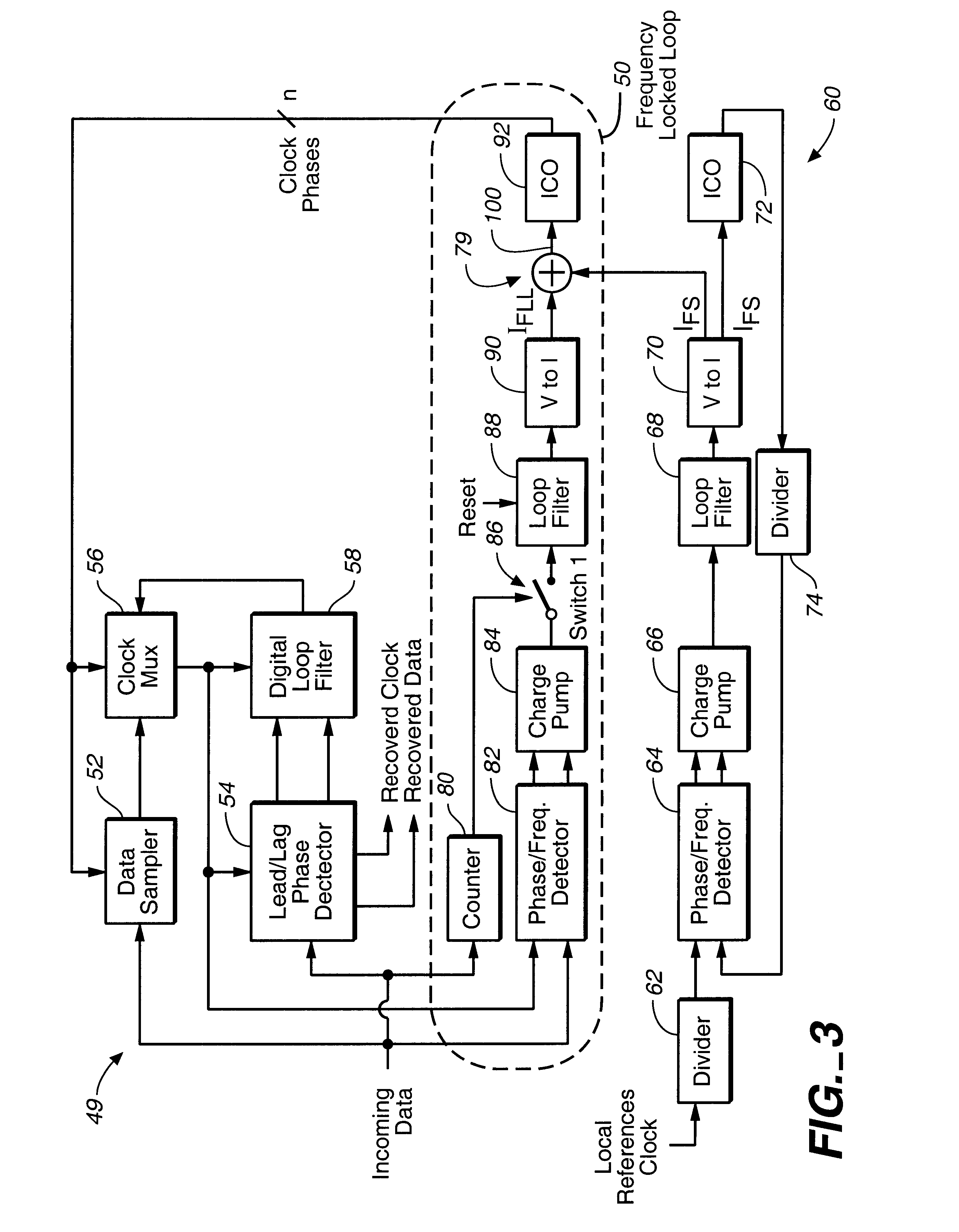Modified first-order digital PLL with frequency locking capability
a technology of frequency locking and digital pll, applied in the field of first-order digital pll, can solve the problems of analog pll's present, relatively difficult to effectively migrate to a new process technology, and analog pll's are typically sensitive to nois
- Summary
- Abstract
- Description
- Claims
- Application Information
AI Technical Summary
Benefits of technology
Problems solved by technology
Method used
Image
Examples
Embodiment Construction
FIG. 3 illustrates a first-order digital PLL 49 which is in accordance with an embodiment of the present invention. The PLL 49 illustrated in FIG. 3 includes many of the same components as does the PLL 18 illustrated in FIG. 2, but also includes a frequency-locked loop (FLL) 50. As will be described more fully herein, the FLL 50 effectively tracks out the frequency difference between a clock signal embedded in the incoming data and local reference clock and provides that the PLL 49 can accommodate large frequency differences.
The PLL 49 shown in FIG. 3, like the PLL 18 shown in FIG. 2, includes a data sampler 52 and a lead / lag phase detector 54 (identified in FIG. 3 as "Lead / Lag PD"), both of which receive incoming data having a clock signal embedded therein. The PLL 49 also includes a clock multiplexer 56 (identified in FIG. 3 as "Clock MUX") and a digital loop filter 58 (identified in FIG. 3 as "Digital LF"). The PLL 49 also includes a frequency synthesizer 60 which, like the frequ...
PUM
 Login to View More
Login to View More Abstract
Description
Claims
Application Information
 Login to View More
Login to View More - R&D
- Intellectual Property
- Life Sciences
- Materials
- Tech Scout
- Unparalleled Data Quality
- Higher Quality Content
- 60% Fewer Hallucinations
Browse by: Latest US Patents, China's latest patents, Technical Efficacy Thesaurus, Application Domain, Technology Topic, Popular Technical Reports.
© 2025 PatSnap. All rights reserved.Legal|Privacy policy|Modern Slavery Act Transparency Statement|Sitemap|About US| Contact US: help@patsnap.com



